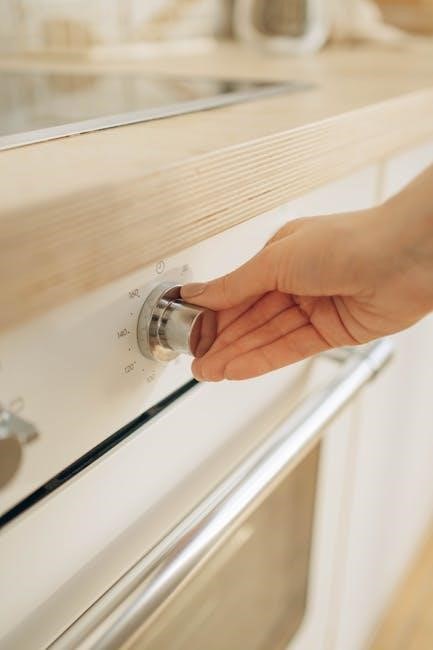Your electric fireplace manual is a crucial guide for safe and efficient operation․ It provides essential safety tips‚ installation steps‚ and maintenance advice to ensure optimal performance․
Understanding the manual helps you navigate controls‚ heating settings‚ and troubleshooting․ Always read it carefully before use to avoid hazards and enjoy your fireplace experience fully․
1․1․ Importance of Reading the Manual
Reading the electric fireplace manual is essential for ensuring safe and proper operation․ It provides critical safety information‚ installation guidelines‚ and operating instructions to prevent hazards like electric shock or fire․ Failure to follow the manual’s instructions can result in serious injury or damage․ The manual also outlines proper maintenance and troubleshooting steps‚ helping you enjoy your fireplace efficiently․ By understanding the controls and settings‚ you can optimize performance and energy use․ Always read the manual thoroughly before installation or use to avoid potential risks and ensure a safe‚ enjoyable experience with your electric fireplace․
1․2․ Safety Information Overview
Your electric fireplace manual includes vital safety information to prevent accidents․ Key points include avoiding blocked air intakes‚ not using the fireplace on soft surfaces like beds‚ and keeping flammable materials away․ Proper ventilation is crucial to prevent fire hazards․ The manual also warns against touching hot surfaces to avoid burns and emphasizes the importance of following all safety precautions․ Failure to comply with these guidelines can lead to electric shock or fire risks․ Always prioritize safety by reading and adhering to the manual’s instructions carefully․ This ensures a safe and enjoyable experience with your electric fireplace․
1․3․ Components of the Electric Fireplace
Your electric fireplace is made up of several key components designed for functionality and safety․ The manual controls are typically located on the right side of the unit or inside the air intake slot‚ featuring a 3-position switch for easy operation․ The Opti-myst controls are often found beneath a hinged canopy cover‚ providing access to flame and heat settings․ Additional components include the ashbed grate‚ which should be stored when not in use‚ and the heating element‚ which is designed to mimic a real fire․ Understanding these parts helps ensure proper usage and maintenance‚ allowing you to enjoy the ambiance and warmth of your electric fireplace safely and efficiently․

Safety Precautions
Always follow safety guidelines to prevent fire hazards and electric shock․ Avoid blocking air intakes or placing the fireplace on soft surfaces where openings may become obstructed․
2․1․ General Safety Guidelines
Always read and understand the manual before using your electric fireplace to ensure safe operation․ Keep the area around the fireplace clear of flammable materials․ Avoid placing the unit on soft surfaces like beds‚ as this can block air intakes and pose a fire risk․ Never leave children or pets unattended near the fireplace․ Ensure the appliance is installed on a stable‚ heat-resistant surface․ Regularly inspect the power cord and plug for damage․ Do not operate the fireplace if it is damaged or malfunctioning․ These precautions help prevent accidents and ensure a safe‚ enjoyable experience․ By following these guidelines‚ you can minimize risks and maintain a safe environment while using your electric fireplace․
2․2․ Electrical Safety Tips
To ensure electrical safety‚ never use a damaged power cord or plug․ Avoid using extension cords‚ as they may overheat․ Keep the fireplace away from water sources to prevent electric shock․ Always unplug the unit when not in use or during cleaning․ Ensure the fireplace is installed by a qualified professional if hardwired․ Never modify or tamper with the electrical components‚ as this can cause malfunctions․ Keep children away from the power cord and controls․ Regularly inspect the cord and plug for signs of wear․ If you notice any damage‚ stop using the fireplace immediately․ These precautions help prevent electrical hazards and ensure safe operation of your electric fireplace․ Always follow the manufacturer’s electrical guidelines for optimal safety․
2․3․ Fire Hazard Prevention
To prevent fire hazards‚ keep the electric fireplace at least 3 feet away from flammable materials like curtains‚ furniture‚ or rugs․ Never place combustible items on or near the unit․ Avoid overheating by ensuring proper ventilation in the room․ Do not leave the fireplace unattended while it is in operation․ Keep children and pets away from the appliance‚ especially when it is in use․ If the fireplace produces unusual smells or sounds‚ turn it off immediately․ Regularly inspect for dust buildup‚ as it can increase fire risk․ Never use the fireplace near water or in humid environments․ Always follow the manufacturer’s guidelines for maximum operating times to prevent overheating․ These precautions minimize the risk of fire-related incidents․
2․4․ Proper Ventilation Requirements
Ensuring proper ventilation is crucial for safe and efficient operation of your electric fireplace․ While electric fireplaces do not emit fumes like traditional fireplaces‚ maintaining good airflow prevents overheating and ensures optimal performance․ Keep the room well-ventilated by opening windows or using fans to circulate air․ Avoid installing the fireplace in enclosed spaces without proper airflow․ Ensure no obstructions block the airflow around the unit‚ as this can lead to overheating․ Regularly clean the fireplace and surrounding areas to prevent dust buildup‚ which can restrict airflow․ Always follow the manufacturer’s ventilation recommendations to maintain safety and efficiency․ Proper ventilation also helps prevent moisture buildup‚ reducing the risk of mold or mildew․ By adhering to these guidelines‚ you can enjoy a safe and comfortable experience with your electric fireplace․
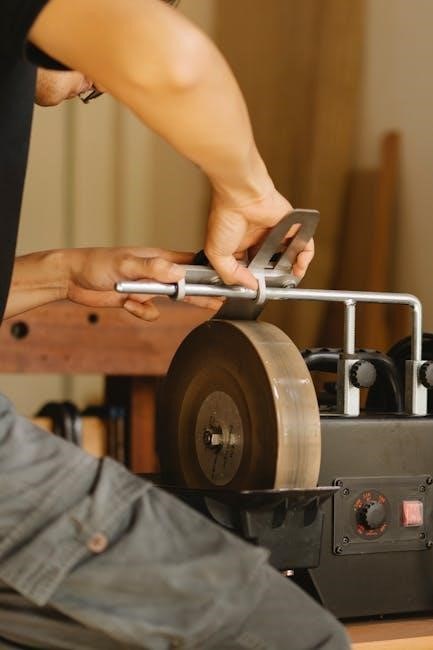
Installation Instructions
Plan installation carefully‚ ensuring all tools and materials are ready․ Follow the manual’s step-by-step guide to assemble and position the fireplace correctly for safe operation․
3․1․ Pre-Installation Checklist
Before installing your electric fireplace‚ ensure the installation location is clear of flammable materials and has proper ventilation․ Verify the floor is level and sturdy enough to support the unit’s weight․ Check that the electrical supply matches the fireplace’s voltage and wattage requirements‚ with a nearby outlet available․ Inspect all components for damage and ensure no parts are missing․ Review local building codes and regulations to comply with installation standards․ Prepare necessary tools‚ such as a screwdriver and measuring tape‚ and read the manual thoroughly․ Ensure the area is free from obstructions and that children or pets cannot access the installation site․ Safety should always be the top priority during the preparation phase․
3․2․ Step-by-Step Installation Guide
Begin by carefully unboxing the electric fireplace and laying out all components․ Position the unit in the desired location‚ ensuring it is level and secure; If wall-mounting‚ follow the manufacturer’s bracket installation instructions․ For freestanding models‚ assemble the legs or base according to the provided hardware․ Connect the electrical components‚ ensuring all wires are securely attached and no loose connections remain․ Plug in the fireplace and test the power button to confirm it functions․ If installing a mantel‚ align it properly and screw it into place․ Double-check all connections and ensure the unit is stable․ Finally‚ turn on the fireplace to verify flames and heat settings work correctly․ Refer to the manual for specific details tailored to your model․
3․3․ Assembly of Fireplace Components
Assembly of your electric fireplace components requires precision and care․ Start by identifying all parts‚ such as the firebox‚ mantel‚ shelves‚ and trim․ Use the provided hardware‚ like screws and brackets‚ to secure each piece․ Attach the legs or base to the firebox‚ ensuring stability․ If your model includes a mantel‚ align it with the firebox and screw it into place․ For wall-mounted units‚ install the mounting bracket first․ Follow the diagrams in your manual to ensure proper alignment․ Tighten all connections firmly but avoid over-tightening‚ which could damage the finish․ Finally‚ attach any decorative trim or accessories to complete the assembly․ Double-check all parts for stability before operating the fireplace․
3․4․ Placement and Positioning Tips
Proper placement and positioning of your electric fireplace are crucial for safety‚ functionality‚ and aesthetic appeal․ Choose a location away from flammable materials‚ such as curtains or furniture‚ and ensure at least 3 feet of clearance from combustible items․ For wall-mounted models‚ follow the manufacturer’s instructions to secure the unit firmly to the wall․ Freestanding fireplaces should be placed on a level‚ stable surface to prevent tipping․ Avoid installing near windows or doors where drafts could interfere with heat distribution․ Position the fireplace in a central location to maximize heat output and visual enjoyment․ Ensure proximity to a power outlet and avoid overloading circuits․ Finally‚ double-check that the unit is level to ensure proper operation and safety․

Operating the Electric Fireplace
Operating your electric fireplace is straightforward․ Use the manual controls to adjust heat and flame settings․ Utilize the remote for convenience․ Explore energy-saving modes for efficiency;
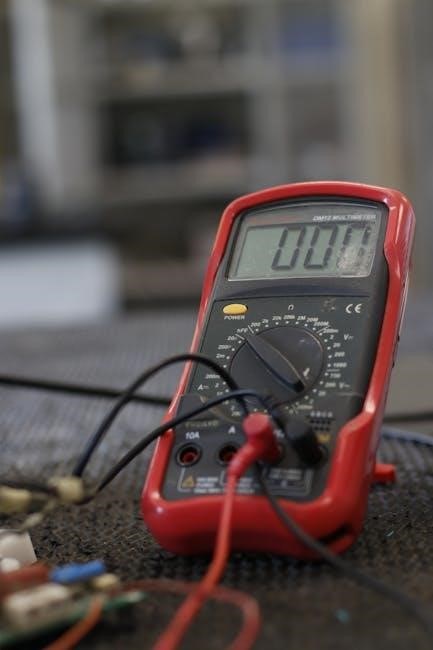
4․1․ Understanding Manual Controls
Your electric fireplace comes with manual controls that allow you to adjust settings directly on the unit․ These controls are typically buttons‚ knobs‚ or switches located on the front or side panel․ The power button turns the fireplace on and off‚ while heat adjustment knobs let you set the desired temperature․ Flame effect controls enable you to customize the visual appearance of the fire‚ such as brightness and speed․ Some models include additional buttons for timers or preset heat settings․ Familiarize yourself with each control to optimize your experience․ The manual will provide diagrams and labels to help you identify and operate these features effectively․
Always refer to the manual for specific instructions‚ as control layouts may vary by model․ Proper use ensures safety and efficiency․
4․2; Heating and Flame Settings
Your electric fireplace offers adjustable heating and flame settings to enhance comfort and ambiance․ Heating settings typically include low‚ medium‚ and high options‚ allowing you to customize warmth based on room size and personal preference․ Flame settings let you adjust the intensity‚ color‚ and speed of the flames to mimic a realistic fire․ Some models feature preset modes‚ such as a cozy glow or vibrant blaze‚ while others allow manual fine-tuning․ Experiment with these settings to achieve your desired atmosphere․ Always refer to the manual for specific guidance on optimizing these features for your model․ Proper adjustment ensures both energy efficiency and an enjoyable experience․
4․3․ Using the Remote Control
Your electric fireplace’s remote control offers convenient operation from a distance․ Typically‚ it includes buttons for power‚ heat‚ flame intensity‚ timer‚ and brightness․ Press the power button to turn the unit on or off․ Use the heat button to toggle between heat settings or disable heating for ambient flames only․ Adjust flame intensity with dedicated buttons to achieve your preferred visual effect․ Some remotes include a timer function‚ allowing you to set a specific runtime for hands-free operation․ LED indicators on the remote or fireplace often light up when a function is active․ Always ensure the remote has working batteries and is used within the specified range for optimal performance․ This feature enhances ease of use and customization‚ making your electric fireplace experience more enjoyable․
4․4․ Energy Efficiency Features
Modern electric fireplaces are designed with energy efficiency in mind‚ offering features that reduce power consumption while maintaining performance․ Many models include energy-saving modes that automatically adjust heat output or turn off the unit when not in use․ LED technology is commonly used for flames and lighting‚ as it consumes less energy than traditional bulbs․ Some fireplaces also feature programmable timers‚ allowing you to set specific operational periods to avoid waste․ Additionally‚ certain units include eco-friendly settings that balance heating and visual effects to minimize energy use․ These features not only lower electricity bills but also align with environmental conservation efforts‚ making your electric fireplace a practical and sustainable choice for home heating and ambiance․
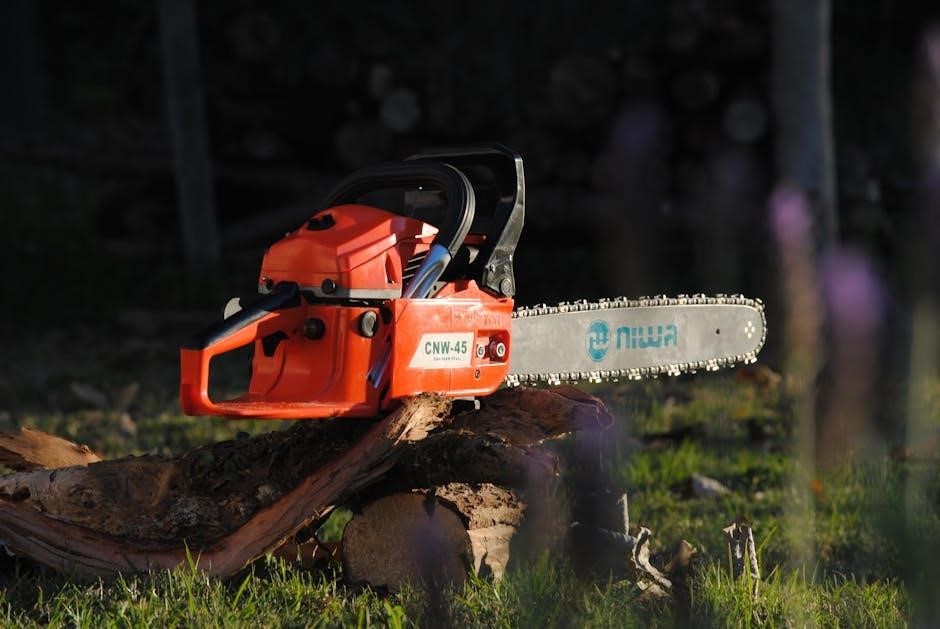
Maintenance and Cleaning
Regular cleaning ensures optimal performance․ Dust surfaces with a soft cloth‚ avoiding harsh chemicals․ Inspect electrical components for wear․ Always unplug before cleaning for safety․
5․1․ Regular Cleaning Schedule
To maintain your electric fireplace’s performance and appearance‚ establish a regular cleaning routine․ Clean the exterior weekly with a soft‚ dry cloth to remove dust and fingerprints․ For more thorough cleaning‚ use a slightly damp cloth‚ but avoid harsh chemicals or abrasive materials that could damage the finish․ Inspect and clean the air vents monthly to ensure proper airflow․ Every three to six months‚ wipe down the heater and internal components with a dry cloth‚ ensuring no dust accumulates․ For glass surfaces‚ use a glass cleaner and a lint-free cloth to prevent streaks․ Regular cleaning prevents dust buildup‚ reduces fire hazards‚ and keeps your fireplace looking like new․ Always unplug the unit before cleaning to ensure safety․
- Daily: Turn off and wipe surfaces with a soft cloth․
- Weekly: Check for dust and clean vents․
- Monthly: Clean internal components and inspect for wear․
- Deep clean every 3-6 months for optimal performance․
5․2․ Deep Cleaning Procedures
For a deeper clean‚ perform these steps every 6-12 months to maintain your electric fireplace’s efficiency and appearance․ Start by unplugging the unit and allowing it to cool completely․ Remove any decorative front panels or grilles‚ typically held in place by screws or clips‚ and clean them separately using a mild soap solution and a soft-bristle brush․ Use compressed air to blow out dust from vents and internal components․ Dampen a cloth with water and gently wipe down the heating element‚ flame effect area‚ and interior surfaces․ Avoid harsh chemicals or abrasive cleaners‚ as they may damage finishes․ Allow all parts to dry completely before reassembling and plugging in the unit․ Regular deep cleaning prevents dust buildup and ensures optimal performance․
- Unplug the unit and let it cool before cleaning․
- Remove and clean decorative parts separately․
- Use compressed air for internal dust removal․
- Avoid harsh chemicals to protect finishes․
5․3․ Maintaining Electrical Components
To ensure the longevity and safe operation of your electric fireplace‚ regular maintenance of its electrical components is essential․ Begin by inspecting the power cord for any signs of damage‚ such as fraying or cracks‚ and replace it immediately if compromised․ Check the circuit board and connections for dust buildup‚ using compressed air to gently remove debris․ Ensure proper ventilation around the unit to prevent overheating‚ which can damage electrical parts․ Avoid using damaged or inferior-quality extension cords‚ as they can cause electrical issues․ Lastly‚ clean the electrical contacts on switches and remote-control receivers with a soft cloth to maintain smooth functionality․ Regular inspections and cleanings will help prevent malfunctions and extend the lifespan of your electric fireplace․
- Inspect the power cord for damage and replace if necessary․
- Use compressed air to clean dust from electrical components․
- Ensure proper ventilation to avoid overheating․
- Avoid using damaged or low-quality extension cords․
- Clean electrical contacts to maintain functionality․
5․4․ Troubleshooting Common Issues
If your electric fireplace encounters issues‚ start by identifying the problem and referring to the troubleshooting steps below․ If the unit does not turn on‚ check the power supply and ensure the circuit breaker has not tripped․ For uneven heat distribution‚ verify that vents are unobstructed and the unit is placed on a level surface․ If the remote control malfunctions‚ replace the batteries or check for interference from other devices․ For flickering flames or unusual noises‚ inspect the internal components for dust buildup and clean as needed․ Resetting the unit by unplugging and replugging it can often resolve minor glitches․ Always refer to the manufacturer’s guidelines for specific troubleshooting procedures․
- Check power supply and circuit breaker if the unit won’t turn on․
- Ensure vents are clear for proper heat distribution․
- Replace remote batteries or reduce device interference․
- Clean internal components to fix flickering or noise issues․
- Reset the unit by unplugging and replugging it․
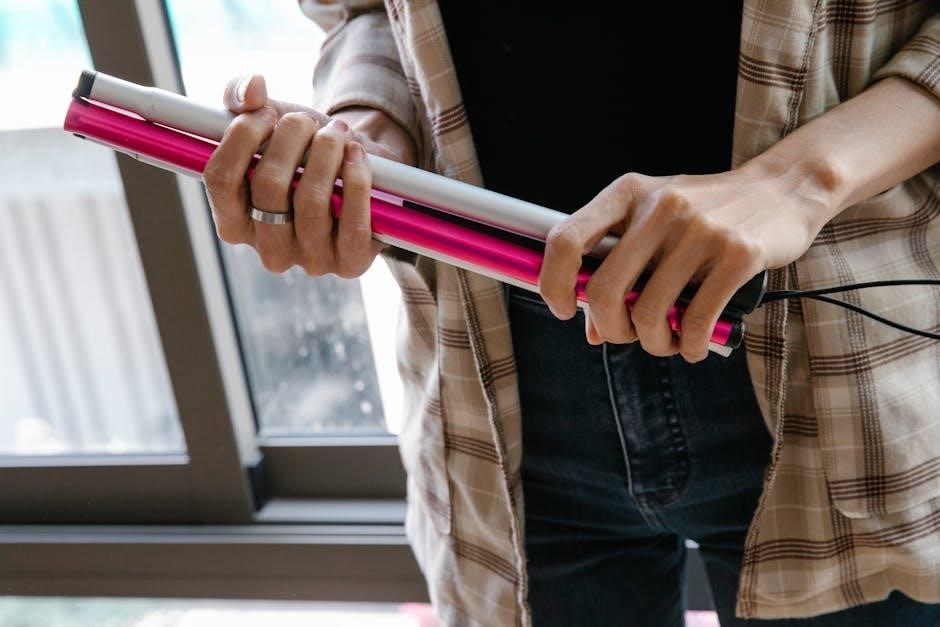
Troubleshooting Guide
Identify and resolve common issues with your electric fireplace using this guide․ Address problems like malfunctioning heaters‚ flickering displays‚ or unusual noises with step-by-step solutions․
- Check power connections and reset the unit if necessary․
- Clean dust from internal components to ensure proper function․
- Refer to error codes for specific troubleshooting instructions․
6․1․ Common Problems and Solutions
Addressing common issues with your electric fireplace can ensure optimal performance and safety․ Below are typical problems and their solutions:
- No heat output: Check if the heater is turned on and the temperature setting is correct․ Ensure the power cord is securely plugged in․
- Flickering flames: Adjust the brightness settings or replace the LED light bulbs if necessary․ Clean any dust from the flame effect area․
- Unusual noise: Lubricate moving parts or ensure the unit is placed on a stable‚ level surface․ Check for loose components and tighten them․
- Remote control issues: Replace the batteries or ensure the infrared sensor is clear of obstructions․
Regular maintenance can prevent many of these issues․ Always refer to the manual for specific guidance․
6․2․ Error Codes and Their Meanings

Understanding error codes is crucial for diagnosing and resolving issues with your electric fireplace․ These codes provide specific insights into system malfunctions:
- E1: Indicates a temperature sensor malfunction․ Turn off the unit‚ allow it to cool‚ and restart․
- E2: Signifies an overheating issue․ Ensure proper ventilation and check for blockages in air vents․
- E3: Points to a faulty remote control connection․ Replace batteries or re-sync the remote with the fireplace․
- E4: Represents a power supply problem․ Verify the outlet is functioning and the cord is securely connected․
Always consult the manual for code-specific instructions․ If issues persist‚ contact a certified technician for assistance․
6․3․ DIY Repair Tips
Performing basic DIY repairs can save time and money․ Start by unplugging the fireplace to ensure safety․ For issues like a faulty remote‚ replace batteries or check for signal interference․ If the flame effect is weak‚ clean the LED screen gently with a soft cloth․ Heating problems may stem from blocked vents; inspect and clear debris․ Loose connections can cause malfunctioning parts‚ so tighten all wires and plugs; If the unit won’t turn on‚ verify the power source and circuit breaker․ For persistent issues‚ refer to the troubleshooting guide before contacting a professional․ Always prioritize safety and avoid tampering with internal electrical components unless confident in your abilities․
6․4․ When to Contact a Professional
If you encounter issues beyond basic troubleshooting‚ it’s crucial to contact a professional․ This includes electrical problems‚ such as short circuits or wiring issues‚ which require expert attention․ If the fireplace’s heating element or internal components malfunction‚ avoid attempting DIY repairs‚ as this can lead to further damage or safety hazards․ Similarly‚ if error codes persist despite troubleshooting‚ professional diagnosis is necessary․ For complex issues like faulty thermostats or control boards‚ a licensed technician should be consulted․ Always prioritize safety and avoid risking electrical or fire hazards․ Contacting a professional ensures repairs are done correctly and safely‚ maintaining your fireplace’s efficiency and longevity․
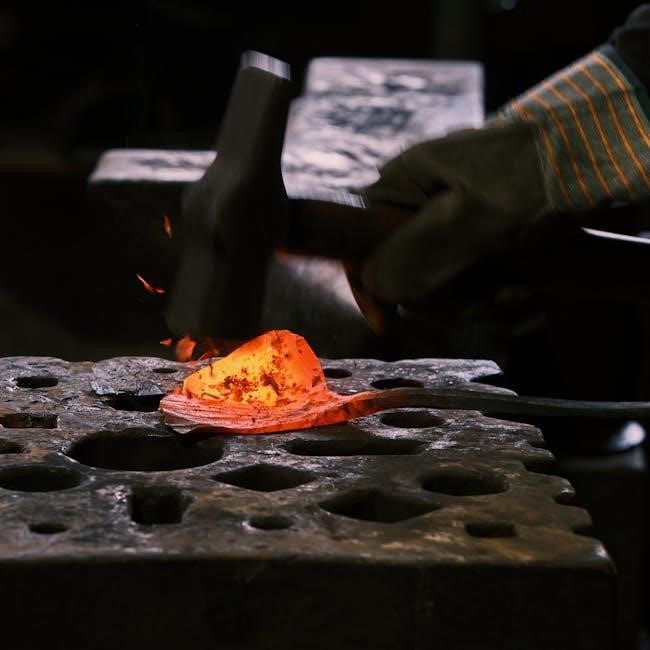
Additional Features and Upgrades
Explore optional features like Wi-Fi connectivity‚ flame effect customization‚ and heater settings․ Consider upgrading to smart technology for voice control or installing custom surrounds for aesthetics․
7․1․ Optional Features Available
Modern electric fireplaces often come with optional features to enhance functionality and aesthetics․ Wi-Fi connectivity allows control through smartphone apps‚ while flame effect customization offers realistic visuals․ Some models include adjustable heat settings‚ LED lighting for ambiance‚ and touch-screen controls․ Additional features may involve programmable timers‚ thermostats‚ and eco-mode settings for energy savings․ Customizable surrounds and trim kits can match your home decor․ Certain units also offer smart home integration‚ enabling voice commands via devices like Alexa or Google Home․ These features provide flexibility and convenience‚ making your electric fireplace a versatile addition to your living space․ Always check compatibility and manufacturer recommendations when adding upgrades․
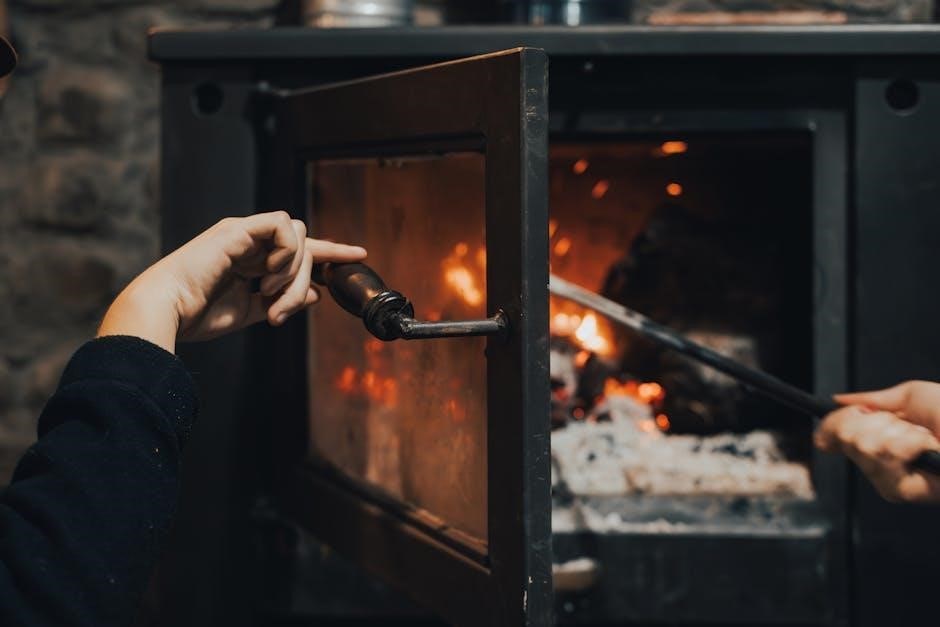
7․2․ Upgrading Your Electric Fireplace
Upgrading your electric fireplace can enhance its performance‚ efficiency‚ or aesthetic appeal․ Consider adding modern features like advanced LED flame technology‚ improved heating elements‚ or smart home integration․ You can also upgrade the surround‚ mantel‚ or trim to match your home decor․ Some upgrades‚ like installing a more powerful heater or adding a programmable thermostat‚ improve functionality․ Always ensure compatibility with your existing unit and follow manufacturer guidelines․ For complex upgrades‚ consult a professional to avoid damage or safety risks․ Regularly check the manufacturer’s website for available upgrade kits or accessories․ Upgrading can breathe new life into your electric fireplace‚ ensuring it remains a cozy and stylish centerpiece for years to come․
7․3․ Customization Options
Electric fireplaces offer a variety of customization options to tailor the experience to your preferences․ Many models allow you to adjust flame color‚ intensity‚ and pattern to create a unique ambiance․ Some units also enable heat output customization‚ letting you choose between full heat‚ half heat‚ or flame-only modes․ Additionally‚ you can personalize the appearance by changing the surround‚ trim‚ or decorative media‚ such as adding pebbles or logs for a more realistic look․ Certain fireplaces also support smart technology integration‚ allowing you to control settings via a smartphone app․ Customization options ensure your electric fireplace blends seamlessly with your home decor and meets your specific needs for comfort and aesthetics․
7․4․ Smart Technology Integration
Smart technology integration enhances the functionality and convenience of your electric fireplace․ Many modern models are compatible with popular smart home systems‚ such as Amazon Alexa or Google Home‚ allowing voice control of settings like heat‚ flame‚ and timers․ Additionally‚ some fireplaces come with dedicated smartphone apps that enable remote adjustments‚ scheduling‚ and energy monitoring․ This feature ensures you can customize your fireplace experience without leaving your seat․ Smart integration also offers advanced features like energy usage tracking and automatic software updates․ By connecting your electric fireplace to your smart home network‚ you can enjoy seamless control and optimal performance‚ making it a perfect addition to any tech-savvy household․
8․1․ Final Safety Reminders
Always keep the electric fireplace out of reach of children and pets to avoid accidental burns or injuries․ Never leave the appliance unattended while in operation․ Ensure the surrounding area is clear of flammable materials‚ such as curtains or furniture․ Avoid using water to clean or extinguish sparks‚ as this can cause electrical damage․ Regularly inspect the power cord and plug for signs of wear or damage․ Unplug the fireplace when not in use or during extended periods of absence․ Follow all manufacturer guidelines for maintenance and operation․ Schedule professional inspections if you notice unusual behavior or malfunctions․ Remember‚ safety is paramount to enjoy your electric fireplace responsibly․
8․2․ Manufacturer Contact Information
For any inquiries‚ concerns‚ or technical support‚ contact the manufacturer directly․ Their customer service team is available to assist with questions about your electric fireplace․ You can reach them via phone at 1-800-XXX-XXXX or email at support@manufacturer․com․ Visit their official website at www․manufacturer․com for additional resources‚ troubleshooting guides‚ and warranty information․ Mailing address: 123 Manufacturer Lane‚ City‚ State‚ ZIP Code․ Office hours are Monday to Friday‚ 8 AM to 5 PM EST․ Ensure to have your product model number and purchase date ready for efficient service․ The manufacturer is committed to providing excellent support to ensure your electric fireplace operates safely and effectively․ Always refer to official channels for genuine assistance and parts․
8․3․ Online Resources for Further Assistance
For further assistance with your electric fireplace‚ explore the manufacturer’s official website for detailed guides‚ troubleshooting tips‚ and downloadable manuals․ Many brands offer FAQ sections and video tutorials to address common issues․ Additionally‚ online forums and community groups dedicated to electric fireplaces can provide valuable insights and user experiences․ Social media platforms may also offer direct support or updates from the manufacturer․ Always verify the authenticity of online resources to ensure accurate and safe information․ Utilizing these resources can help you maintain‚ troubleshoot‚ and optimize your electric fireplace effectively․ Remember to consult official channels for the most reliable guidance and support․
